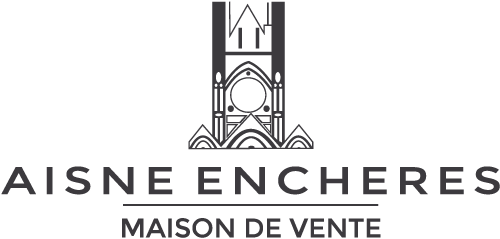Lot n° 228
Estimation :
10000 - 12000
EUR
George DESVALLIERES (1861-1950). "Fourth station: Jesus meet - Lot 228
George DESVALLIERES (1861-1950). "Fourth station: Jesus meets his mother". Large sketch for the Way of the Cross in the Church of Sainte Barbe in Wittenheim. Oil on paper mounted on canvas and squared. Signed upper right. 1930 (Dim 148 x 360 cm) (some tears)
Referenced in the catalog raisonné of Catherine Ambroselli - De Bayser, under number CR 2061 (Tome III, page 536)
Provenance: artist's family; Seine-Port, private collection, 1955 (by descent)
"Comment: This fourth station in the Wittenheim church, painted on paper and kept by the artist, was later exhibited, even though the canvases were now marouflaged in Wittenheim. The painting was exhibited at the Salon des Tuileries in 1939: "Jesus succumbs under the weight of his heavy Cross and meets his mother, who faints at the sight of her Son, now a man of sorrow atoning for the sins of the world. The tragedy of the Passion is poignantly evoked here." (Charnage) The poignant encounter between Jesus and his mother on the Stations of the Cross, offered to the public at large, strikes a chord with exhibition-goers. Louis Vauxcelles speaks of the "unspeakable emotion" it provokes (Vauxcelles, Le Monde illustré, June 3, 1939)". (Catherine Ambroselli De-Bayser, "Georges Desvallières - Catalogue raisonné de l'Œuvre complet", Ed. Somogy éditions d'art, Paris, 2015)
As a child, Georges Desvallières already demonstrated a talent for drawing. Thanks to his grandfather, academician Ernest Legouvé, the painter Jules-Elie Delaunay (1828-1891), a friend of the latter, helped to awaken little Georges. The young Desvallières continued his training under Gustave Moreau (1826-1898). Admitted to the Ecole des Beaux-Arts in 1879, he joined Alexandre Cabanel's studio, but only stayed a few months.
A close friend of Gustave Moreau, he set up his studio near Moreau's home. He also maintained an epistolary relationship with Moreau's pupil Georges Rouault (1871-1958). From 1883 to 1901, he exhibited at the Salon des artistes français.
Born into a non-practising family, he distanced himself from Catholicism, before being encouraged, notably by Huysmans, to return to this spirituality. Against the tide of secularization sweeping civil society at the time, he returned to his Christian faith, painting more and more religious subjects.
He takes part in the International Exhibition of Modern Christian Art organized at the Musée des Arts Décoratifs in Paris by the Société de Saint-Jean (founded for the development of Christian art), and later becomes its vice-president along with Maurice Denis. He joined the Dominican Third Order and in 1912 published a manifesto in favor of a school of sacred art.
During the First World War, Georges Desvallières gave up painting to join the 6th Territorial Battalion of Foot Chasseurs (BTCA). His sons, Richard and Daniel, are both mobilized. Daniel, a student at the Académie de la Grande Chaumière, was mowed down by shellfire at the age of 17.
During a dangerous mission in enemy territory, Georges Desvallières vowed to dedicate his painting to God. When he returned unscathed, he fulfilled this vow, abandoning secular subjects once and for all. He went so far as to combine the Passion of Christ and the sacrifice of the poilu in "Sacré Coeur dans un éclatement" (Sacred Heart in a Burst) in 1920.
When the war ended in 1919, he and Maurice Denis opened the ateliers d'art sacré. This school broke with the organization of the academy and was intended to be a workshop with students, apprenticed to the master as in the Middle Ages, responding to precise commissions. This marked the beginning of major decorative projects, including our sketch for the Stations of the Cross in the church of Sainte-Barbe in Wittenheim.
My orders
Sale information
Sales conditions
Return to catalogue

